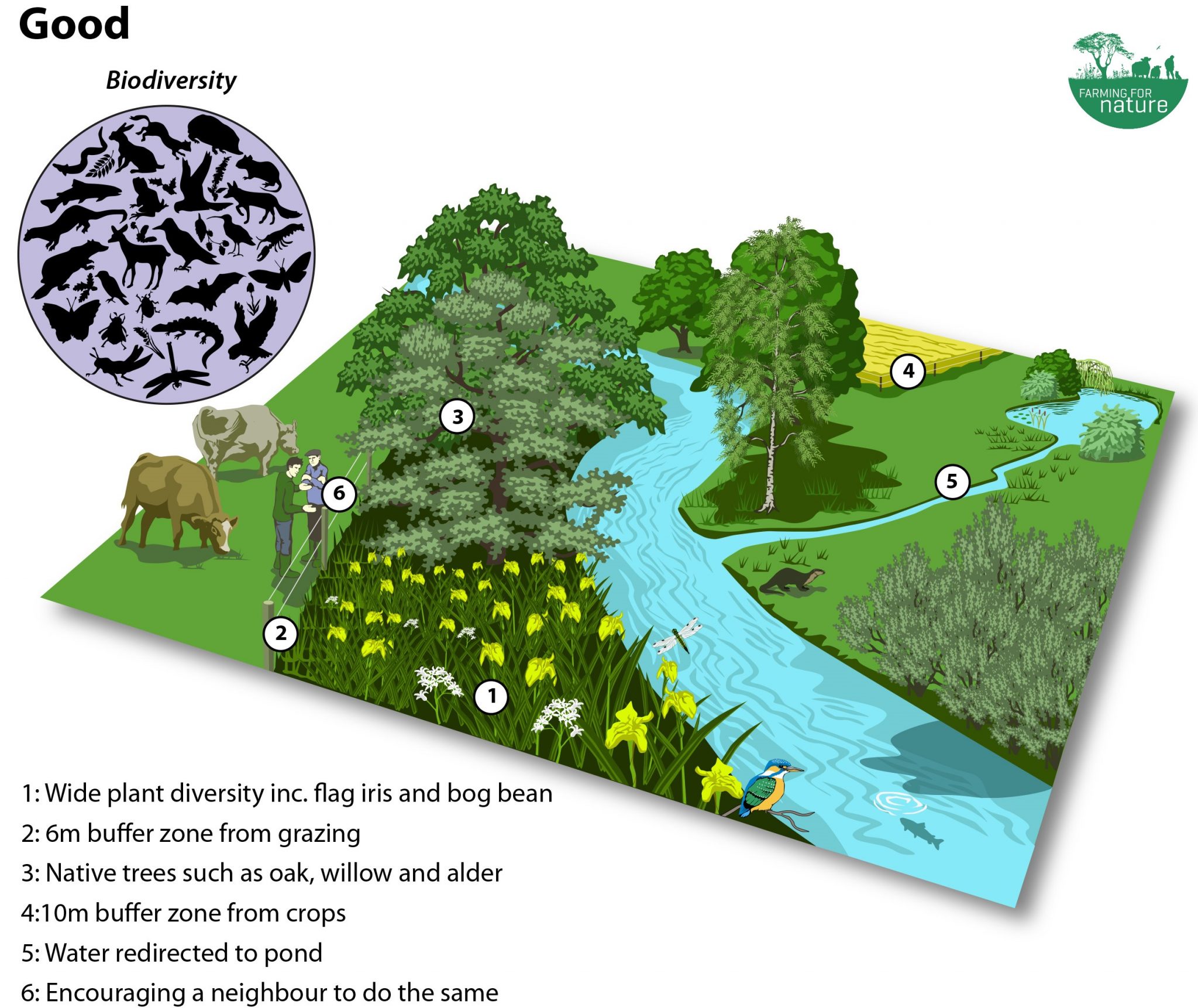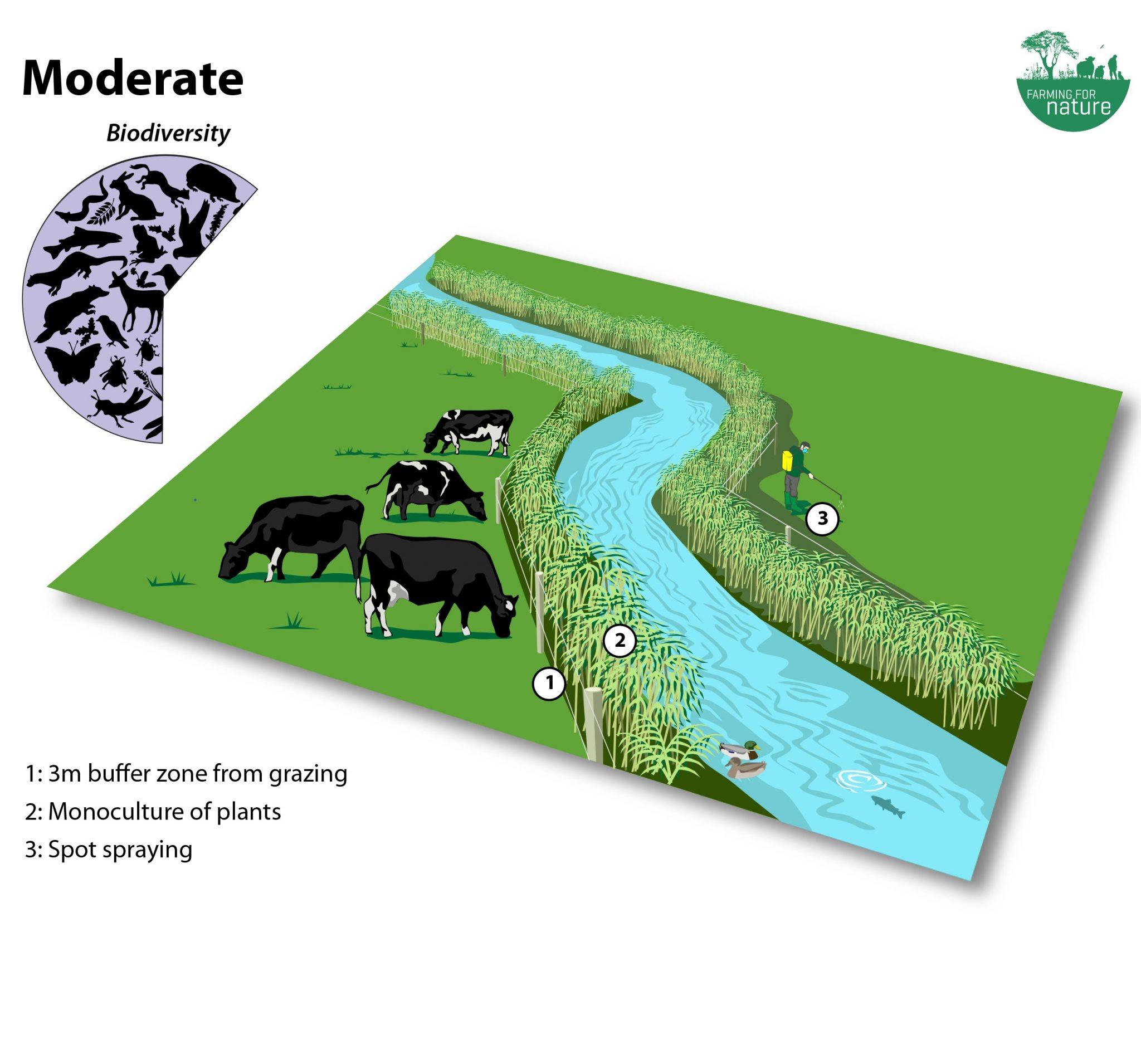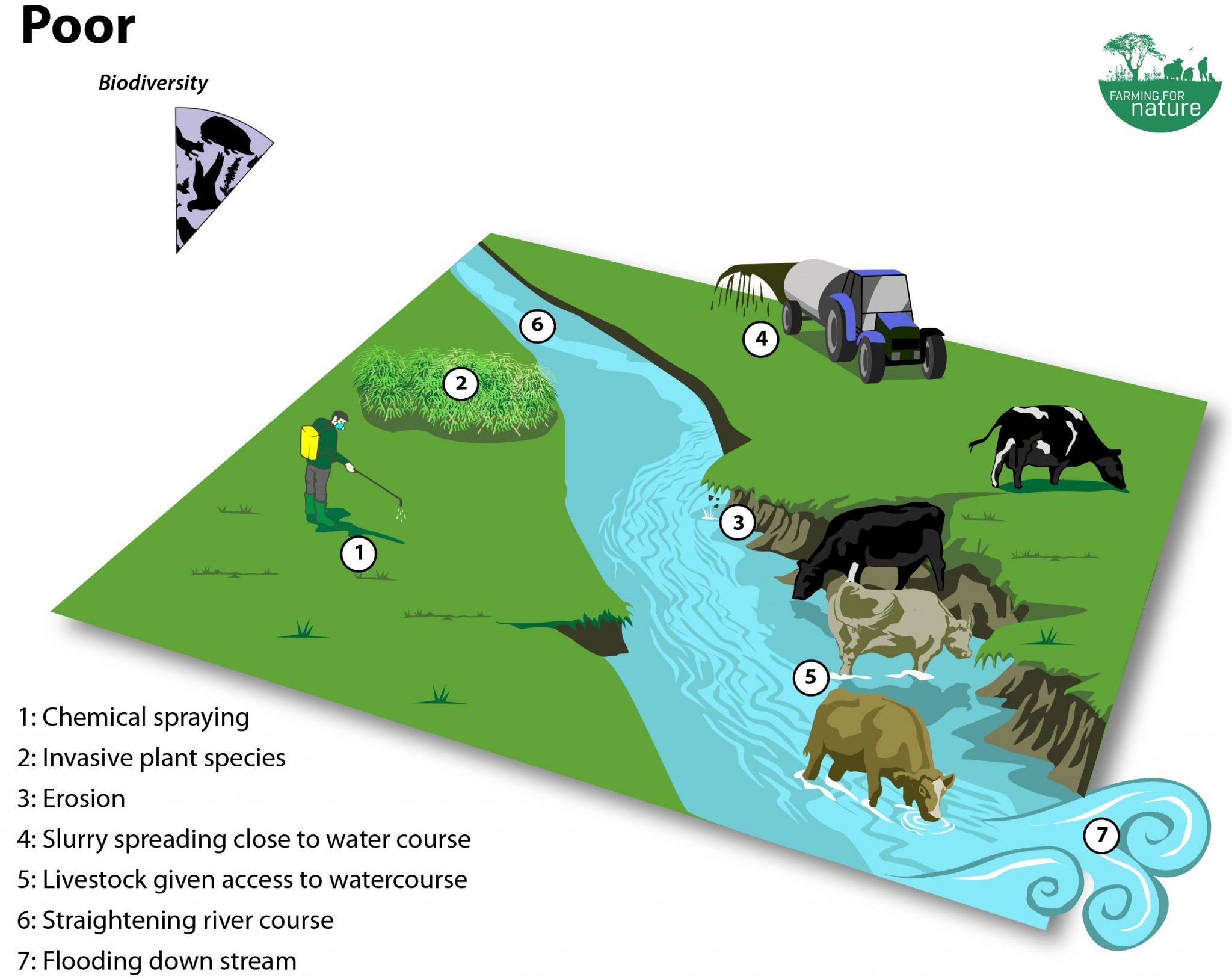Best Practice Guides
VIEW & PRINT AS WATERCOURSE LEAFLET HERE
Watercourse management
Watercourses on farmland refer to features such as rivers, streams, drains and canals. These are all important, interconnected elements of a wider ‘catchment’ which includes wet grasslands, turloughs, lakes and callows. Watercourses generally contain three habitat types – riffles (used for spawning and for food), glides (important corridors) and pools (resting areas). Good management of on-farm watercourses will generate wider benefits while poor management –through point-source and diffuse pollution – can negatively impact over a much broader area.
Why should I manage my watercourses?
Agricultural Benefits: Managing your watercourses well – for example by having good buffer zones – will help avoid losing valuable nutrients and soil from your land and creating unhealthy drinking sources for your livestock and for those downstream who depend on this water. Managing your watercourse well can also help reduce flood-risk on your farm and/or downstream while polluted watercourses may result heavy fines or even prosecution. On a more positive note, ‘result-based’ Agri-environment schemes may offer financial rewards for well managed watercourses.
Ecological Benefits: Watercourses and their buffer zones are hugely important habitats for a range of plant and animal species, providing food, water and shelter for wildlife as well as an important corridor for their movement. Salmon, trout, eels, lamprey as well as rare species such as the freshwater pearl mussel live and breed in clean watercourses. Some of our best loved birds – kingfishers and herons – are often seen along watercourses.
Climate Benefits: Good watercourse management can slow the flow of water thus reducing the risk of flash floods at times of heavy rain; they can also help wet local soils and offset the impact of prolonged droughts.
What does a well-managed watercourse look like?



How do I manage my watercourses?
- Begin by mapping out your watercourses and assessing them in terms of their condition. There are some really good ‘biological indicators’ which will tell you a lot about the condition of your watercourses – looking on the underside of stones within a river or stream can tell you a lot! There is also a lot of help at hand – for instance from your Local Authority Water Conservation Officer.
- If there are sources of damage, try to identify where and how, for example, nutrients and soils are escaping into water courses. These could be ‘point sources’ of damage – cattle accessing watercourses, a sewage pipe emptying into a drain – or ‘diffuse sources’ – slurry or fertiliser spread on or near a wetland area for example. Address these issues as an urgent priority – a small amount of pollutants or sediment can destroy a lot of freshwater habitat and damage the species therein.
- Creating a buffer zone between the land and the watercourse is a good placed to start. These buffers will hold onto pollutants, reduce siltation and provide a habitat for many beneficial insects and nesting sites for birds. They will also help to stabilise the watercourse bank and limit soil loss/erosion. The larger the buffer strip the more effective it will be – at least 3m should be used for rivers and 2m for streams but increasing to over 6m would be ideal, with a buffer of at least 10m for cropland.
- If using buffer strips, you will need to provide an alternative water source for livestock – a simple solution like a pasture pump can provide a low-maintenance supply of clean, fresh water for livestock.
Further Actions:
- Planting native trees along a watercourse will help stabilise banks and provide shade – though care should be taken to avoid excessive shade as this will inhibit the growth of aquatic vegetation. Plant on the northside of the watercourse, if possible, to allow for sufficient light to get through. Trees will also help control stream temperature and weed growth as well as providing a habitat for wildlife. Suitable native trees include willow, oak, alder and birch.
- If you wish to reduce dominant vegetation such as scrub or bulrush (reed mace), do so in small segments on rotation in late autumn/ early winter. However, minimise disturbance as much as possible – frogs, newts and insects may be hibernating in the muddy pond bottom.
- If you have reclaimed wetland areas near to your watercourse in the past, consider restoring them by blocking drainage channels. ‘This ‘re-wetting’ will often deliver really fast benefits for biodiversity.
- Can part of your watercourse be diverted into a pond? The ideal location for a new pond is in an open, sunny spot in a grassland away from any water pollution threats and near to other natural habitats. Build in a kidney shape and incorporate a gradual slope for various different species. Make sure the location is a wet area with a high water table or a stream that can be diverted into it and have an overflow outlet. Do not introduce fish; they eat frog eggs and insect larvae, limiting the pond’s diversity.
- Can you work with your watercourse neighbours to protect and enhance the biodiversity of the rivers, streams and lakes?
Farmer’s tip:Can you connect up different watercourses and wetland areas? Curlews for instance can need a series of wet places in a wider area to survive. Although these birds are not resident and are increasingly rare, they are key species. There is a huge benefit emotionally, physically and spiritually with any watercourse for a farmer. When we encourage these habitats, the interest these places bring to our lives grows and grows as they do. Michael Hickey, Farming For Nature Ambassador |
Avoid
- Avoid livestock using the waterways as a source for drinking as this can cause erosion and pollution. If possible, pipe water to nearby troughs and fence off the damaged areas.
- Avoid reclaiming wetland areas for more intensive agriculture – these areas provide a huge range of important ecosystem services.
- Avoid overgrazing wetland buffer zones or disturbing bankside vegetation as this destabilises the banks.
- Keep an eye on potential invasive species that have arrived through the watercourse. Consult your local ecologist or Water Conservation Officer on how these are best managed.
- Avoid all potential pollution. It is vital to stop fertilisers, slurry, pesticides and herbicides from reaching nearby watercourses.
- Avoid cleaning out a ditch that is full of sediment. Ideally, these should be left alone but if absolutely necessary, carry out work in short sections over time. For example, work on 20-30 m long staggered sections over winter, and finish remaining sections the following winter, to not completely disturb the ditch and allow re-colonisation of freshly dredged sections. It’s a similar amount of effort, but spread out over two years.

